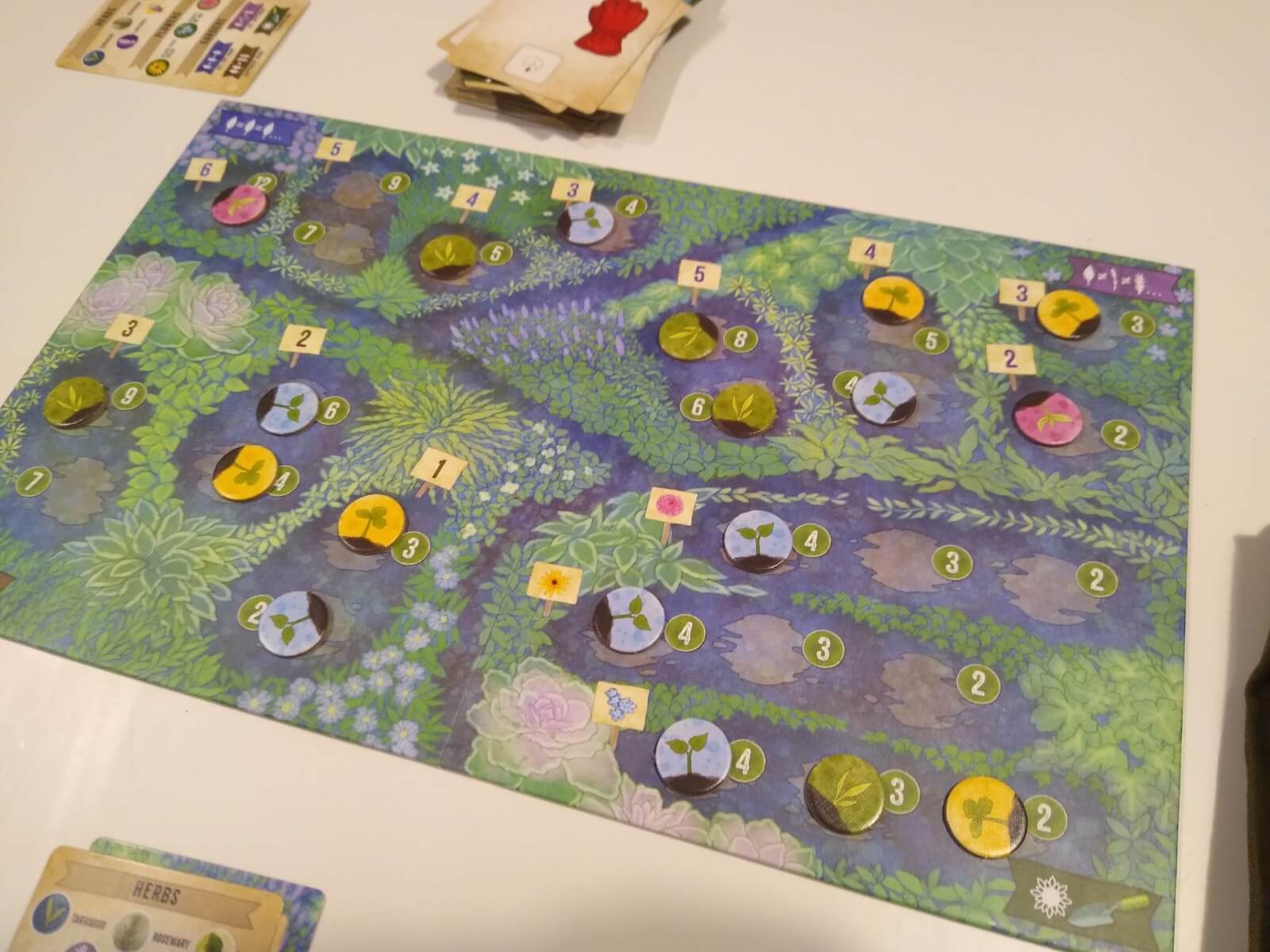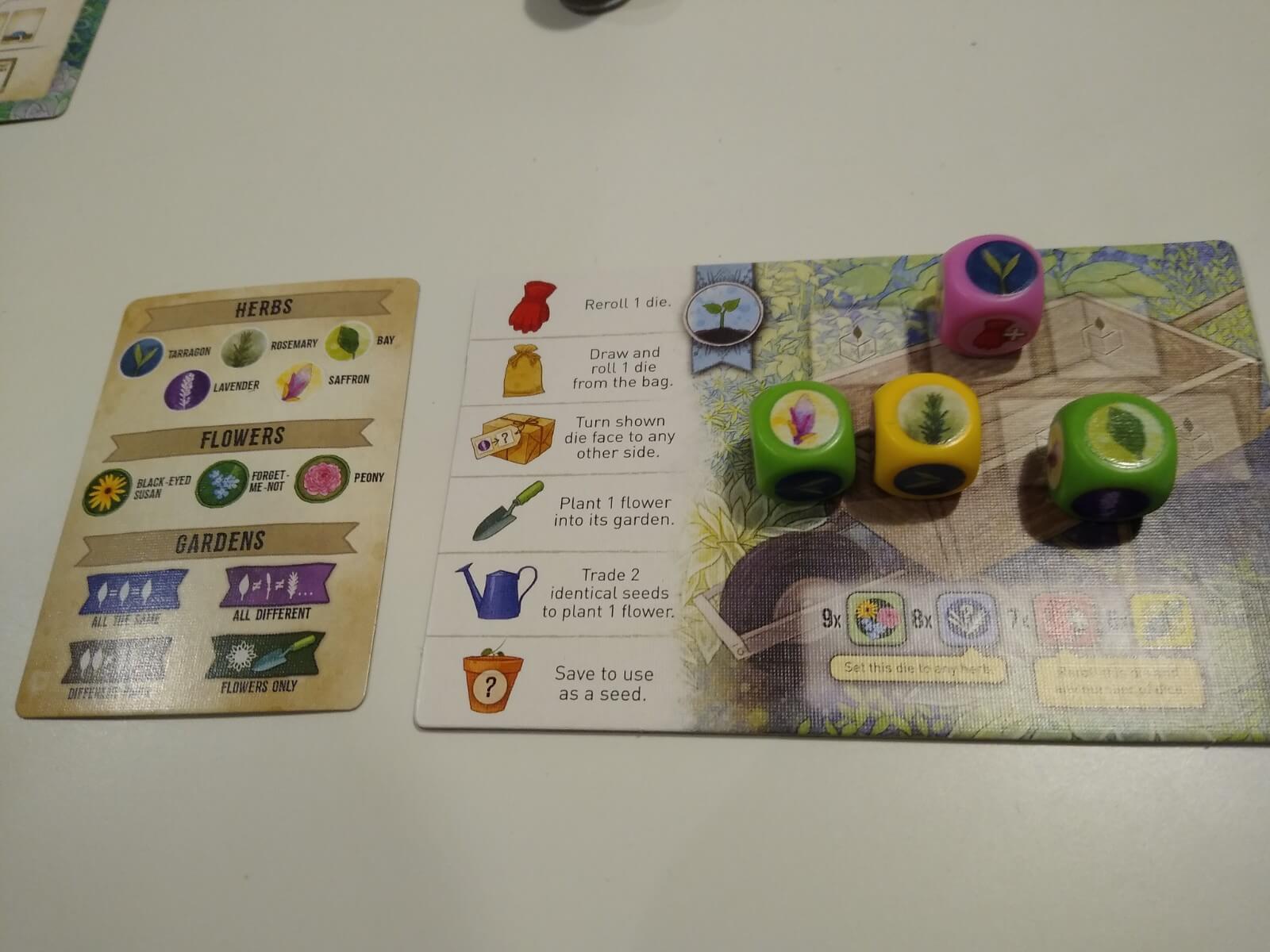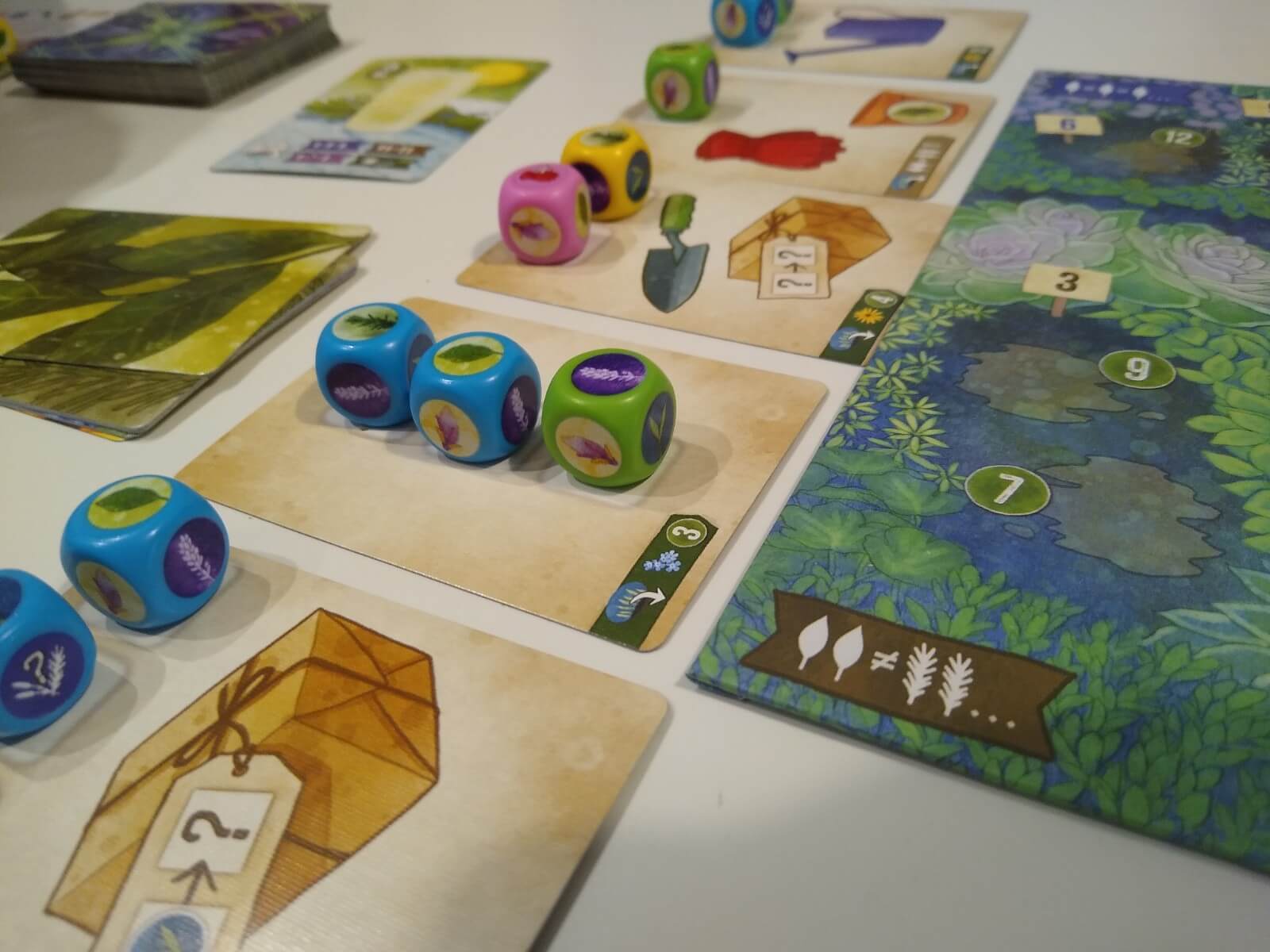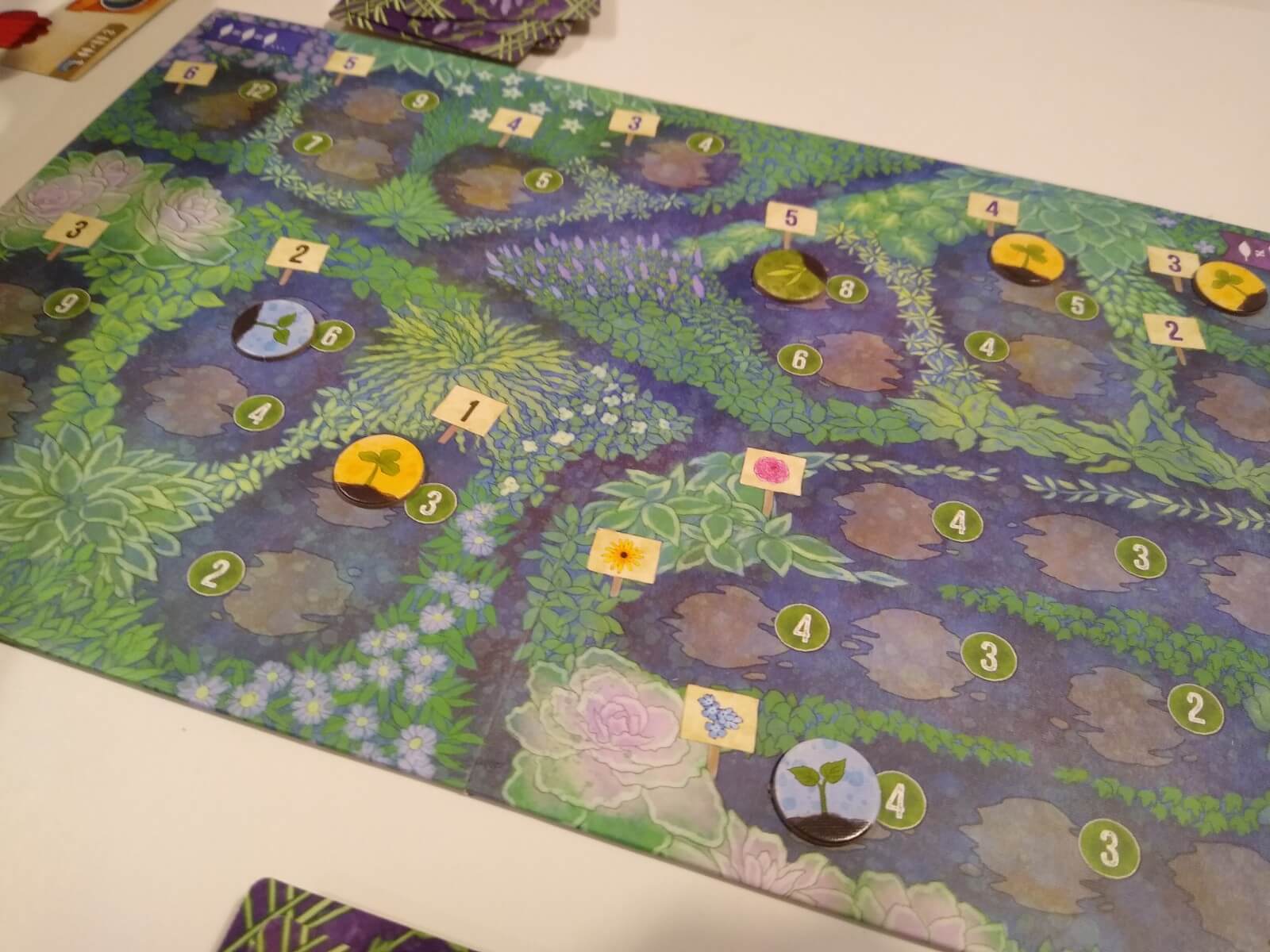Herbaceous Sprouts — A lovely garden game
Tabletop games come in so many different shapes, sizes and themes. Ones with food in them tend to be my favorite, personally, but nature games also catch my eye. Herbaceous Sprouts is one such game — I saw it on a shelf at a shop and needed to have my own copy to play.
Herbaceous Sprouts can be played single player or with up to four players total. It’s a lovely little gardening game where you’re trying to grow flowers to gain points and be the player with the most points at the end. When I played with my tabletop group, we played as the maximum amount of players, however in single player mode, there is a sort of AI — directed by drawn cards — that you play against.
Despite not being able to take a look at the single player version of this game, I think that including a way Herbaceous Sprouts can be played solo — and adding in this enemy — is very thoughtful and nice. We could see the AI for single player listed on regular cards and had a rough understanding of how it would play, but even though we didn’t use it, all agreed that it added a lot of valuable versatility to the game.
But, back to what we actually played. Herbaceous Sprouts is a medium sized box with a fair bit of stuff within it. First you will probably see the game board, which is a giant flower patch missing its flowers. Sign posts and mounds that can be planted on are shown instead. There are a bunch of cards; 40 Tool cards, a Lemonade card, eight Bonus information cards and four reference cards. For dice, you will find 30 seed dice, which belong inside the seed dice bag. There are four wheelbarrow mats (one for each player), 60 player spout tokens (divided up by player color) and twenty rival sprout tokens (used in single player, to represent the aforementioned AI). All of these components are really lovely and feel high quality, well worth the price. Even the dice bag feels great and is decorated with the game’s name on it.
Setting up the game isn’t too hard at all. The game board goes in the middle of the table, as does the tool card deck, the lemonade card and a bag of dice. Each player receives a wheelbarrow mat, the colored sprout tokens that match the color on their mat and a reference card.
Your main objective is to be the Head Gardener by contributing in the best ways to the community garden. This garden is divided into four different sections, showing what type of plants are needed to be played in each. White signs on specific mounds or mound areas show how many of the above needed dice have to be used to plant there. For example, one corner wants you to have different herbs on different dice. A four sign in that area means you need four different dice, each with a different herb. Another area needs matching pairs, with the white signs indicating the set number of pairs you want to plant. In mound areas, more points come to the first person who plants the mound, as shown by the number within the green circle by it.
Gameplay is pretty simple. Whoever is currently the head gardener gets to flip over a predetermined number of tool shed cards and then fill the blank spaces with dice at random. They then get to pick a card from the tool shed and start their turn. The dice on the top of the card will go into their wheelbarrow mat, if there is room. Otherwise, they might have to discard the extra seeds at the end of their turn. The cards that the dice are placed on sometimes have various actions. Two different pictures on them allows you to choose the action, while one just allows you to use it if you wish. Seed pots allow you to use the card as a seed that turn, shovels and watering cans allow you to plant flowers specifically (as opposed to herbs which will fill most of the garden) and gloves allow you to reroll any single die or dice. Some cards also have boxes on them, that allow you to change specific dice to any other herb.
On your turn, you can plant as many times as your dice allow and use the card you have just gained, but once you are done, you must discard it. The next player then goes, choosing a card from the tool shed and taking their turn. You get the joy of watching a garden grow, hopefully with your own little sprouts leading the way. Whoever is the first to plant one sprout in each area of the garden even gets a tasty lemonade card, which adds a few more points onto their final score.
Keeping track of everyone’s wheelbarrow and trying to understand what they are going to do next is a big part of Herbaceous Sprouts, but there is just something lovely about trying to grow a garden that all your friends are also growing. Getting more and more points as you go along, your sprouts do matter, but even if you are not playing seriously it’s still a fun game. I am very glad that Herbaceous Sprouts caught my eye — it’s a very nice game that captures the feeling of springtime. Our tabletop group really enjoyed playing it and the entire thing felt relaxing. I’d very much recommend it to anyone who’s looking for a cute, medium length game to play with their friends.
You can purchase Herbaceous Sprouts on Amazon.





Comments are closed.